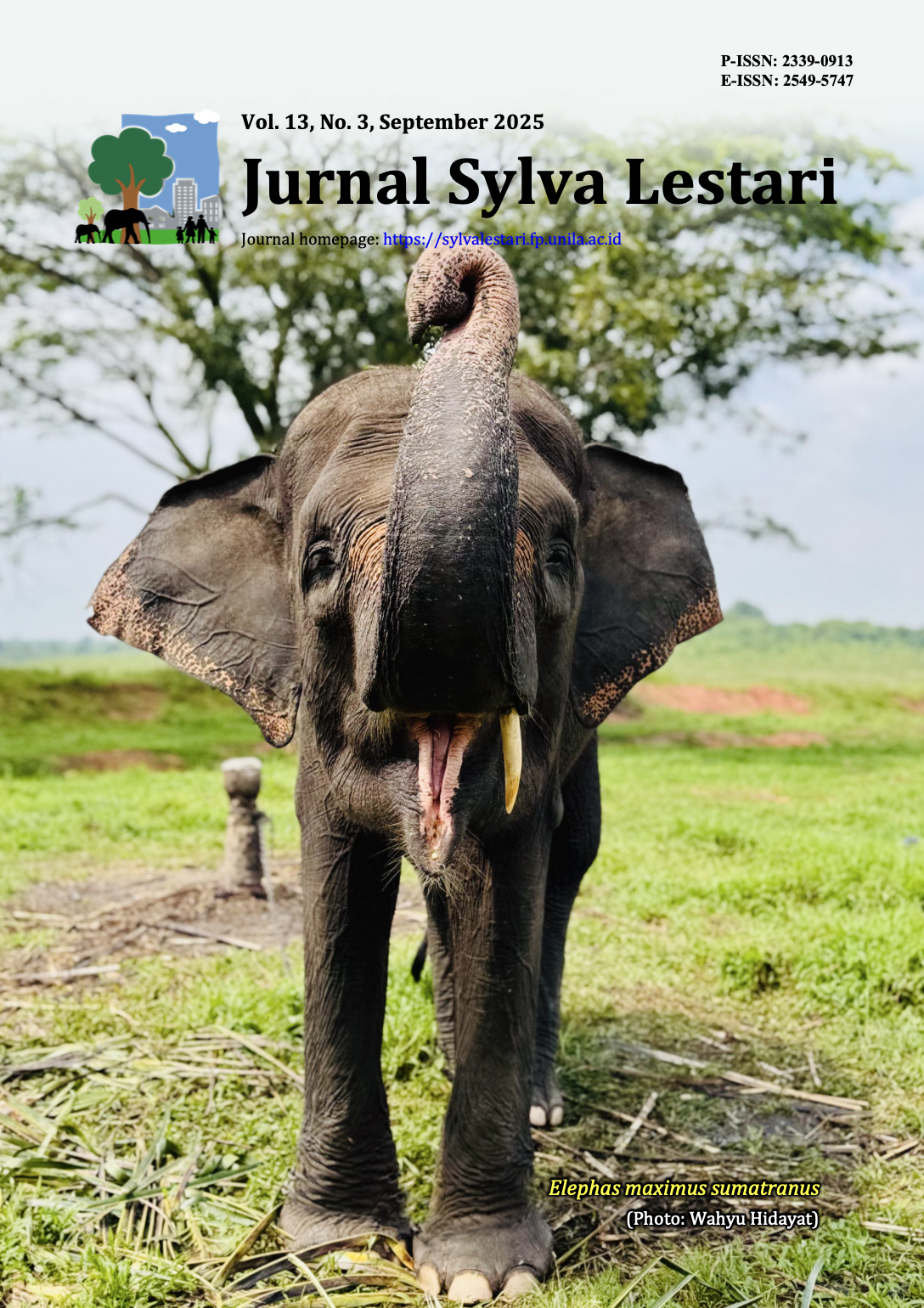Genetic Improvement of Araucaria cunninghamii for Enhanced Industrial Pulp Production
DOI:
https://doi.org/10.23960/jsl.v13i3.1163Abstract
Araucaria cunninghamii has significant potential as a long-fiber pulpwood source in Indonesia; however, its utilization remains limited due to its dependence on imported raw materials. This study presents the results of a first-generation progeny trial designed to evaluate genetic variation and identify superior genotypes for future breeding programs. This study was conducted in Bondowoso, East Java; the experimental was included 80 families from six provenances (Fakfak, Jayapura, Serui, Wamena, Manokwari, and Queensland) and designed by a Randomized Complete Block Design (RCBD); comprised of 6 provenances, 80 families, 4 blocks, 4 trees per plot with a spacing of 4 m ´ 2 m. After six years, the survival rates ranged from 98.30% to 99.61%, indicating a strong potential for adaptability. Significant differences were observed among families for height, diameter, and volume growth traits. Heritability estimates for height, diameter, and volume at the individual level were 0.30, 0.25, and 0.27, respectively, and 0.48, 0.45, and 0.47 at the family level. Strong genetic correlations were found between height and diameter (r = 0.99), suggesting the potential for indirect selection through breeding. These findings highlight the genetic potential of A. cunninghamii for sustainable pulp production and inform future breeding strategies that focus on growth, adaptability, and wood quality.
Keywords: Araucaria cunninghamii, genetic variation, progeny test, pulpwood, heritability, provenance trial
Downloads
Downloads
Published
How to Cite
Issue
Section
Statistics
 Abstract views: 276 times
Abstract views: 276 times PDF downloaded: 247 times
PDF downloaded: 247 times
Metrics
License
Copyright (c) 2025 Bayu Pamungkas, Dedi Setiadi, Liliana Baskorowati, Mashudi, Sugeng Pudjiono, Ida Luh Gede Nurtjahjaningsih, Mudji Susanto, Rina Laksmi Hendrati, Sumardi, Yusuf Sigit Ahmad Fauzan, Pandu Yudha Adi Putera Wirabuana

This work is licensed under a Creative Commons Attribution-NonCommercial 4.0 International License.
Authors retain copyright and grant the journal right of first publication with the work simultaneously licensed under a Creative Commons Attribution-NonCommercial 4.0 Licence that allows others to share the work with an acknowledgement of the work's authorship and initial publication in this journal.
Authors are able to enter into separate, additional contractual arrangements for the non-exclusive distribution of the journal's published version of the work (e.g., post it to an institutional repository or publish it in a book), with an acknowledgement of its initial publication in this journal.
Authors are permitted and encouraged to post their work online (e.g., in institutional repositories or on their website) prior to and during the submission process, as it can lead to productive exchanges, as well as earlier and greater citation of published work (See The Effect of Open Access).









